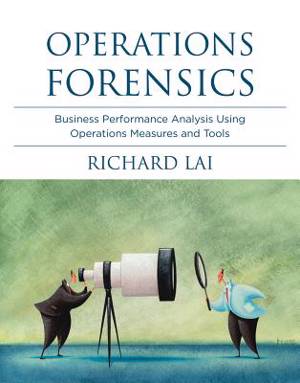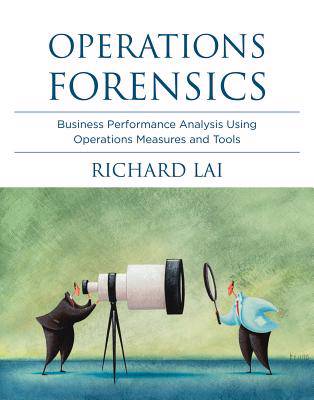
- Retrait gratuit dans votre magasin Club
- 7.000.000 titres dans notre catalogue
- Payer en toute sécurité
- Toujours un magasin près de chez vous
- Retrait gratuit dans votre magasin Club
- 7.000.000 titres dans notre catalogue
- Payer en toute sécurité
- Toujours un magasin près de chez vous
Description
Powerful tools for using operations metrics to analyze companies in ways that go beyond traditional financial models and statements.
Investors and analysts often need to look into a firm's operations more deeply than traditional financial statements and models allow. This book describes newly developed tools for using operations metrics to discern and influence the valuation of a firm. It is the first to present these techniques from a unified perspective: that of operations forensics, which looks at operations management not from the traditional point of view of a manager but from that of an investor or shareholder.
After a discussion of financial statements and the useful but incomplete insights they provide, the book covers the three components of operations forensics: operational indicators, operations details that can predict future performance; operational due diligence, methods for verifying companies' claims about operational excellence and valuing their operational assets; and operational turnaround, an innovative approach to buyout and turnaround strategies. The text also offers brief reviews of operations management concepts, real-world examples of operations forensics, and a glossary. The mathematical material gradually increases in sophistication as the book progresses (but can be skipped without loss of continuity). Each chapter concludes with a "Takeaways and Toolkit" section, a brief summary of prior research, and suggestions for further reading.
Operations forensics offers powerful tools and frameworks for financial analysts, private equity firms, managers, and consultants. This book provides a valuable resource for MBA students and practitioners. Downloadable supplementary material for instructors incudes figures form the text and 42 slides that can be used for class presentations.
Spécifications
Parties prenantes
- Auteur(s) :
- Editeur:
Contenu
- Nombre de pages :
- 336
- Langue:
- Anglais
- Collection :
Caractéristiques
- EAN:
- 9780262018661
- Date de parution :
- 01-03-13
- Format:
- Livre relié
- Format numérique:
- Genaaid
- Dimensions :
- 183 mm x 230 mm
- Poids :
- 775 g







